
黎明鸟瞰图 / Aerial View At Dawn
Photo © ArchiTranslator / He lian
Lahao Stone Houses
由专筑网柊,小R编译
区位
坐落在中国湖南省湘西土家苗族自治区的凤凰古城是著名的历史文化古城,它曾被新西兰作家Rewi Alley 称作是中国最美的乡镇。在大江南北,它享有平遥古城的美誉。在凤凰古城之外,鲜为人知的苗家村寨有着美丽的自然风光和神秘的民间文化与历史。整个村落依山而建,石屋错落有致,铺路石做成的小路蜿蜒曲折,环绕着密林和袅袅炊烟,呈现出一幅宁静与悠然的景象,宛若天堂。
Settlements
The Ancient Town of Fenghuang, located in Xiangxi Tujia and Miao Autonomous Prefecture, Hunan Province, is a famous historical and cultural city in China. It was once called the most beautiful town in China by New Zealand writer Rewi Alley. And it enjoys the same reputation in the south as the Ancient City of Pingyao in the north. Outside the Ancient Town of Fenghuang, there is little-known natural scenery, beautiful Miao villages, and mysterious folk culture with a long history in Miao Township. The whole village is built along the mountains, where stone houses scatter and the roads made of slab-stone wind and stretch. Surrounding trees flourish and the smoke from the kitchen curls upwards, presenting a tranquil and leisure scene like a paradise.
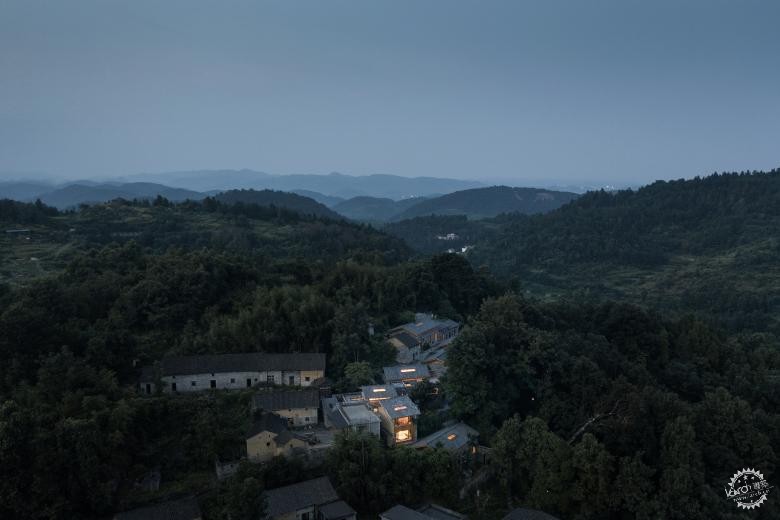
夜晚鸟瞰图 / Aerial View At Night
Photo © ArchiTranslator / He lian
扶贫与福利政策
伯纳别墅是2013年由中国扶贫基金会启动的一个创新公共福利项目,旨在探索一个新的“乡村旅游扶贫+”的模式,致力于搭建连接乡村与外部的平台,并重新评估乡村的价值和创造乡村导向的发展机会。如今,项目已经在全国超过20个乡村内实施,凤凰的拉毫村是伯纳别墅项目之一,由中国石化投资建造。
受中国扶贫基金会的邀请,我们参与到了整个项目的实施过程中,包括乡村遗址选择、总体规划、建筑装修,室内和景观设计,过程持续超过两年,在这个过程中,我们不仅感受到乡村建设的困难与挑战,同时也经历了由我们自身经验带来的乡村环境改进,并深刻感受到了建筑师的社会责任。
Poverty Alleviation and Public Welfare
Bona Villa, an innovative public welfare project for poverty alleviation launched by China Foundation For Poverty Alleviation in 2013, is aimed at exploring a new "Rural Tourism Poverty Alleviation +" model, and is committed to building a platform for the connection between the countryside and the outside, and reassessing poverty villages’ value and creating village-oriented development opportunities. Currently, it has been carried out in more than 20 villages nationwide. Lahao Village in Fenghuang is one of Bona Villa projects and is constructed with funds donated by Sinopec.
At the invitation of China Foundation For Poverty Alleviation, we were involved in the whole process of the project, including the selection of village site, overall planning, architectural renovation, interior and landscape design, which lasted more than two years. In this process, we not only felt the difficulties and challenges of rural construction, but also experienced the improvement of the rural environment brought by our own practice, and deeply realized the social responsibility of architects.
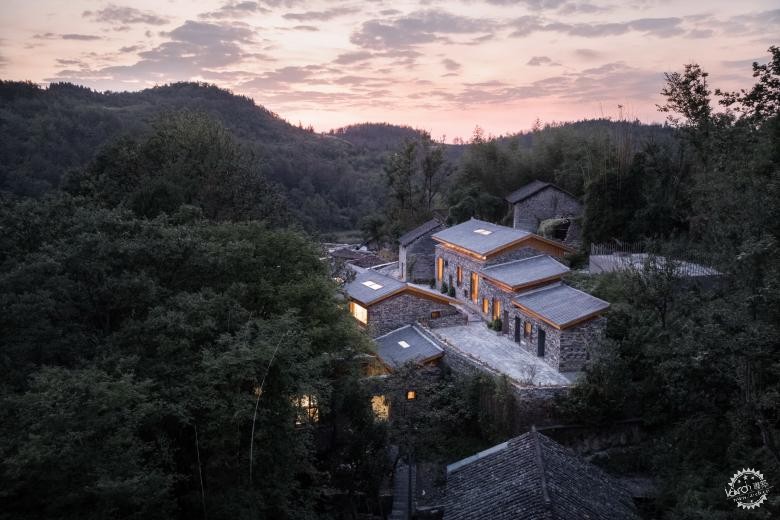
黄昏鸟瞰图 / Aerial View At Dusk
Photo © ArchiTranslator / He lian
传统居所的新生
拉毫石屋坐落于北高南低、相对高差30米的山坡。这里有参天古树和群山环绕着村落。村落的居住形态并不完善,一些房屋保存完好,但一些房屋已经倒塌了,除此之外,还混杂有一些由村民建造的砖混式房屋,对村落质地造成了严重的损坏,我们做调研时,拉毫村就已经是一个“空心村”的状态,只有少数老人和留守儿童生活在此。
通过详细的调查和分析,我们选择了在村落北边一块老房屋相对完好的区域,将老房屋作为寄宿家庭项目的主要建筑。一方面,我们整理了村落的空间,重新组织了公共空间、道路、停车场和其他基础设施,以使家庭寄宿的结构可以清晰的呈现出来;在另一方面,我们选择了12间房屋做装修翻新,包括了公共区域、家庭寄宿和其他功能,值得一提的是,家庭寄宿项目没有设置边界墙体,以便其与保留房屋共存。村落生而自然,新与旧也自然的结合在一起。
方法与策略
项目的转型策略是保护原本的生态景观,尊重原始场地,恢复建筑纹理,并将对自然环境的破坏降到最小。首先,在现存建筑范围内,主体房屋进行改造,而只有带有厕所及鸡笼的房屋被拆除。每间屋子组织成一个庭院,庭院中原有的树木被保留,在形成一个最大景观视野的同时保障隐私。屋子被石路所连接,访客通过攀爬楼梯,以获得移步异景的体验。根据家庭寄宿自身的需求,公共空间和客房的开窗位置都经过细心推敲以获得独特的景观视野。这些窗景可能是参天古树或是葱郁群山,在不同高度提供不同风景。目前有六个寄宿家庭已经落成,建造于村落的东边,而剩余的房屋装修将在未来完成。
Rebirth of Traditional Settlements
Lahao Stone Houses are located on a hillside, which is high in the north and low in the south, with a relative altitude of about 30 meters. There are towering old trees and mountains around the village. The settlement pattern of the village is not complete. Some houses are well preserved, but some have collapsed. There are also several brick-and-concrete houses built by villagers in the gaps, which has caused great damage to the texture of the village. When we did the survey, Lahao Village was already in the state of a "hollow village", with only a small number of elderly and left-behind children living here.
Through detailed investigation and analysis, we selected an area on the north side of the village where the old houses were relatively complete as the main building of the homestay project. On the one hand, we sorted out the space of the village, reorganized the public spaces, roads, parking lots and other infrastructure, so that the structure of the homestay was clearly presented; on the other hand, we selected twelve houses for renovation, which included public areas, homestay and other functions. It is worth mentioning that the homestay project has no walls or borders, so that it coexists with the reserved houses. The village grows like nature, and the new and the old merge together naturally.
Methods and Strategies
The transformation strategies of the project are to protect the original ecological landscape, respect the original site, restore the architectural texture, and minimize the damage to the natural environment. First of all, within the boundary of the existing houses, the main house is transformed, and only the attached toilets and chicken coops are demolished. Each house forms a courtyard, and the original trees in the courtyard are retained to ensure privacy while forming a maximized view of the landscape. The houses are connected by stone paths, and visitors will climb up the stairs, which provides an experience of varying scenery with changing viewpoints.
According to the requirements of the homestay itself, the window positions of public spaces and guest rooms are carefully considered to obtain a unique view of the landscape. These window scenes may be towering old trees or verdant mountains, providing different scenery at different heights. There are currently six homestays that have been implemented, concentrated on the east side of the village, and the rest of the house renovation will be implemented in the future.
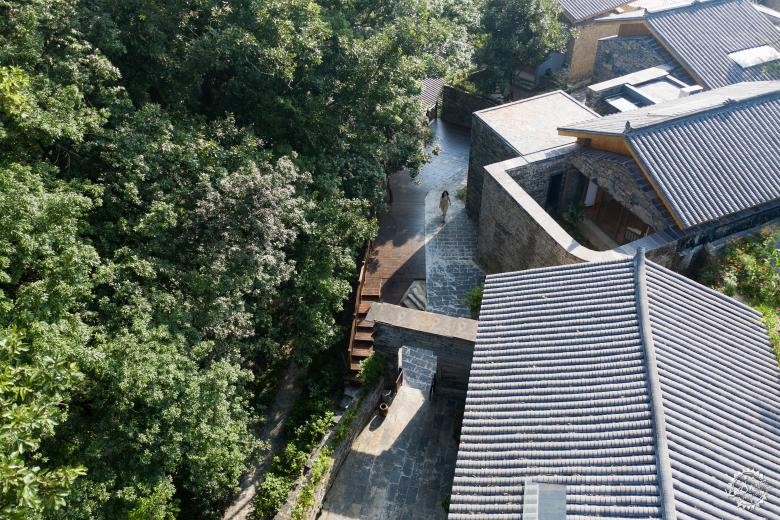
庭院鸟瞰图 / Aerial View Of Courtyards
Photo © ArchiTranslator / He lian
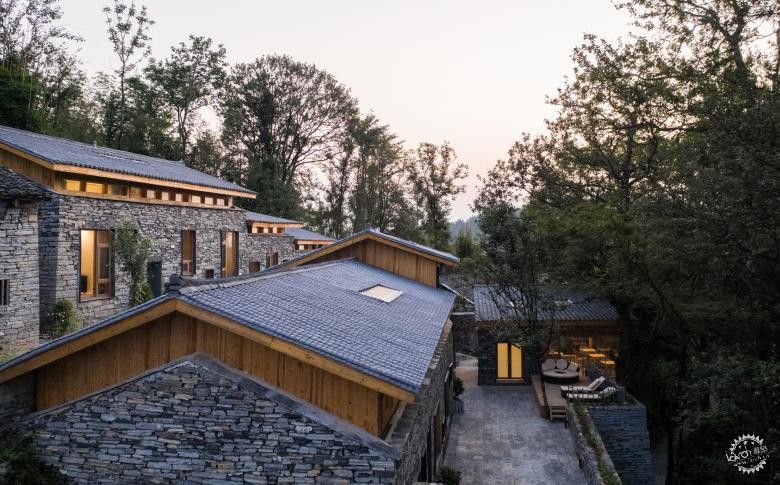
庭院 / Courtyard
Photo © ArchiTranslator / He lian

庭院 / Courtyard
Photo © ArchiTranslator / He lian
材料与施工
拉毫村的石墙在湘西地区十分独特,它不使用任何砂浆进行砌筑,石砖厚度为55厘米。我们只改动了南侧的石墙,让石匠根据传统的干铺式做法去重建它,同时保留另外一面的石墙。在南面石墙重建之后,扩大采光窗户,大大提升了原本的采光条件。在石墙内,插入钢结构系统并且屋顶被抬高到石墙上方80厘米。同时,侧天窗被设置在石墙的较高部位,让更多的光线和景色进入到室内。钢结构系统被用在石墙内部是一个工业化的手段。一方面,它可以应对场地交通限制和乡村建造的准确性;另一方面,钢结构系统和石墙系统的有机集成可以面对寄宿家庭项目多样的功能需求。同时,新与旧、轻与重之间的强烈对比,给村落营造一个戏剧性效果。
除了主要建筑的改造范例外,我们在一些部分采用了不同的改造策略。例如,在二号院落南部房屋保留了原有的夯土砖墙,配合钢结构植入其中。扩建四号院落南部的茶室,并用混泥土楼板使其突出山体,正面完全由玻璃构成,将森林与山谷带入建筑。
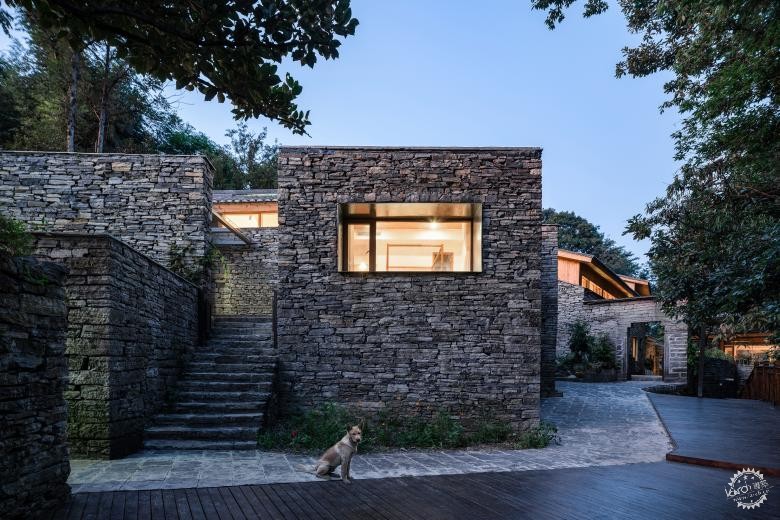
台阶与道路 / The Entrance To The House
Photo © ArchiTranslator / He lian

房屋入口 / Stairs And Roads
Photo © ArchiTranslator / He lian
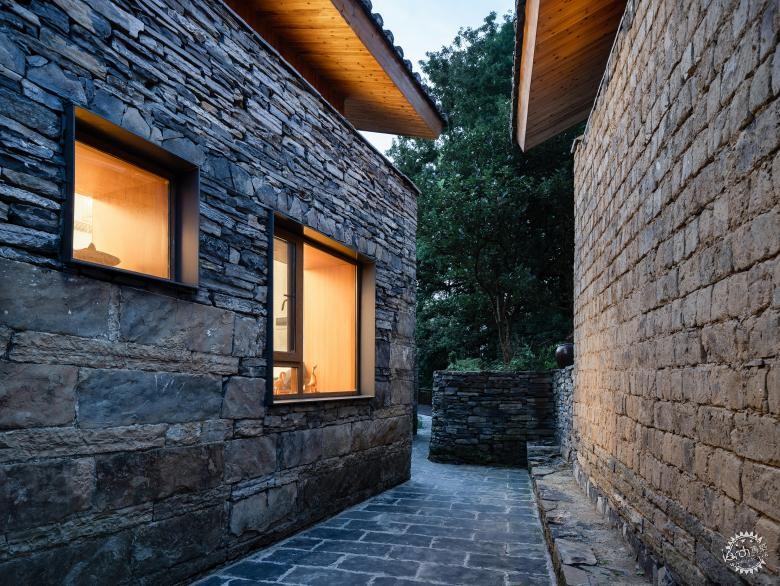
新旧对比 / Contrast Between The New and Old
Photo © ArchiTranslator / He lian
记忆与体验
在拉毫村的重建中,尽管有新与旧的并置,但是乡村生活的记忆仍然被完整的呈现。建筑的石墙被保留了下来,并且院落的石门也得到了细致的保存,在石缝间生长的花草留在了墙上,老房子的木头和其他被收集起来的老物件被用作景观的建设。老物件得到了循环再利用。将居民生活的相关性整合到当地的环境中。
拉毫石屋是“乡村旅游扶贫+”项目的起点,并且一 系列的公共空间和公共景观将在未来持续出现。我们希望拉毫村的改造策略可以作为一个好案例。它们不仅尊重村落的老建筑和生活风格,同时也唤醒了乡村的记忆与情感,让乡村文化得以延续。
Material And Construction
The stone wall in Lahao Village is unique in Xiangxi region. It does not use any mortar for masonry and has a thickness of 55 cm. We only modify the stone walls on the south side, allowing the stonemasons to rebuild it in accordance with the traditional dry-laying method, while retaining the stone walls on other sides. After the stone wall on the south sides are rebuilt, the lighting windows are enlarged, which greatly improves the original lighting conditions.
Inside the stone wall, the steel structure system is inserted and the roof is raised 80cm to float above the stone wall. At the same time, a side skylight is set on the upper part of the stone wall to allow more light and landscape to enter the interior. The steel structure system is used inside the stone wall, which is a means of industrialization. On the one hand, it can cope with the site limitation of transportation and the accuracy of rural construction; on the other hand, the steel structure system and the stone wall system are organically integrated to meet the diversified functional needs of the homestay project. At the same time, there is a strong contrast between the new and the old, the light and the heavy, forming a dramatic effect in the village.
In addition to the transformation paradigm of the main building, we adopt differentiated transformation strategies in some parts. For example, the house on the south side of No. 2 courtyard retains the original rammed-earth brick walls, with steel structures implanted inside. A tea room is expanded on the south side of No. 4 Courtyard, which is protruded out of the mountain with concrete slabs. The facade is made of glass totally, bringing the forest and valley inside.
Memory and Experience
In the reconstruction of Lahao Village, although there is a juxtaposition of the new and the old, the memory of rural life is still present as a whole. The stone walls of the building are preserved, and the stone gate of the courtyard is also carefully preserved. Flowers and plants grow in the gaps of the stone retaining walls. The wood from the old houses and other collected old objects are used to make the landscape. These old objects are recycled. , Integrates the relevance of villagers’ lives into the local context.
Lahao Stone Houses are the starting point of Lahao Village's “Rural Tourism Poverty Alleviation +“project, and a series of public spaces and public landscapes will continue to appear in the future. We hope that the transformation strategies of Lahao Village will serve as a good example. They not only respect the old houses and the lifestyles of the villagers, but also awake the memories and emotions of the village and allow the continuation of the rural culture.

悬臂式休息室 / Cantilevered Teamroom
Photo © ArchiTranslator / He lian
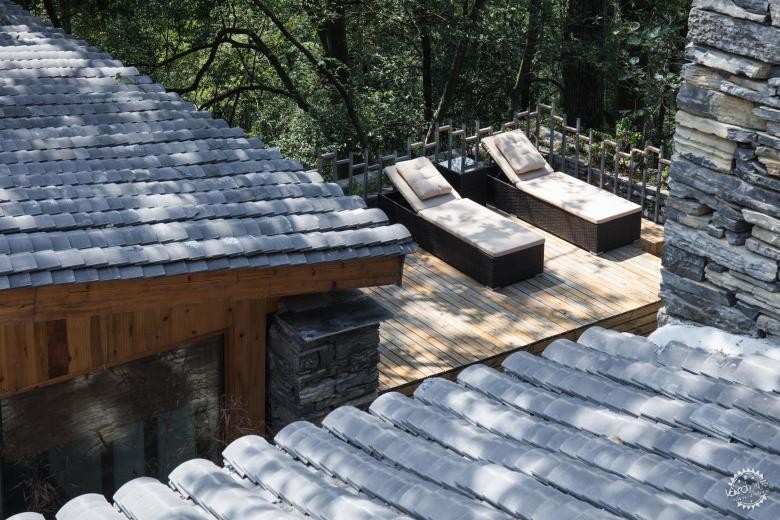
木质平台 / Wooden Platform
Photo © ArchiTranslator / He lian
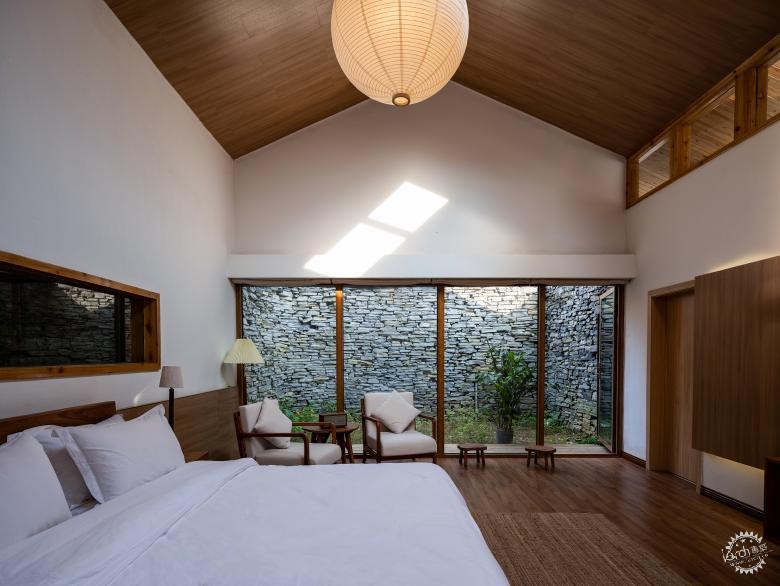
室内效果 / Interior View
Photo © ArchiTranslator / He lian
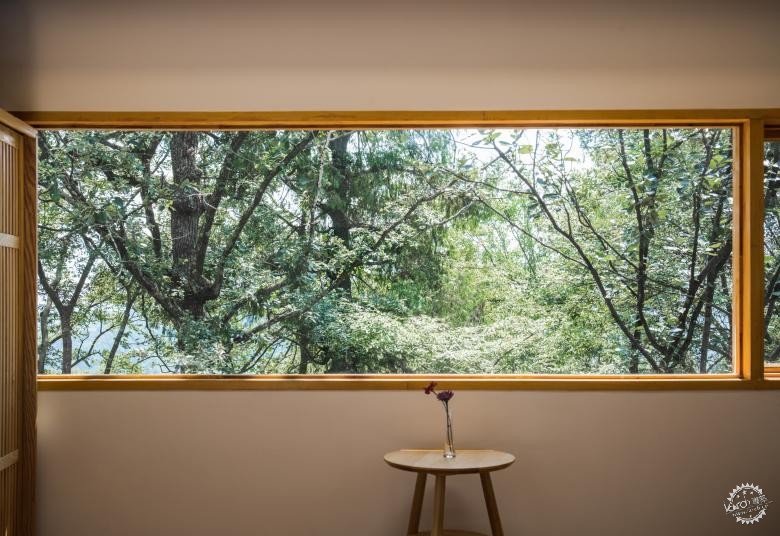
透过窗的景色 / Scenery Through The Window
Photo © ArchiTranslator / He lian
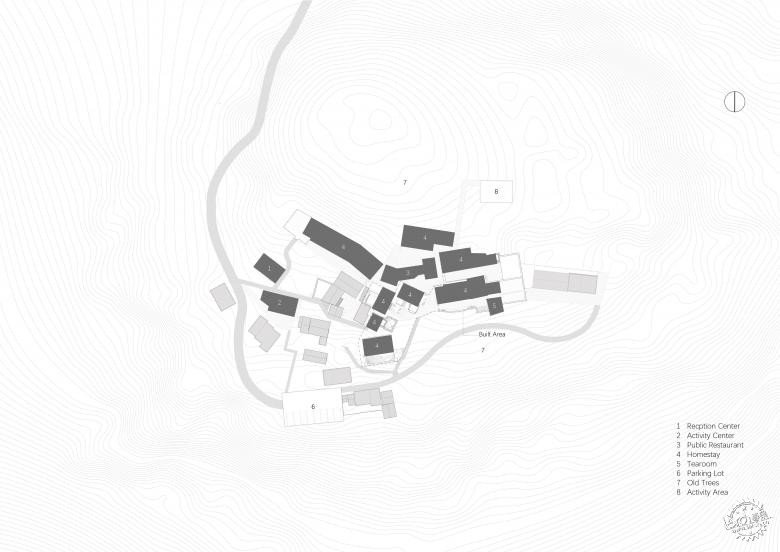
总平面图 / Site Plan
Drawing © United Practice Architects
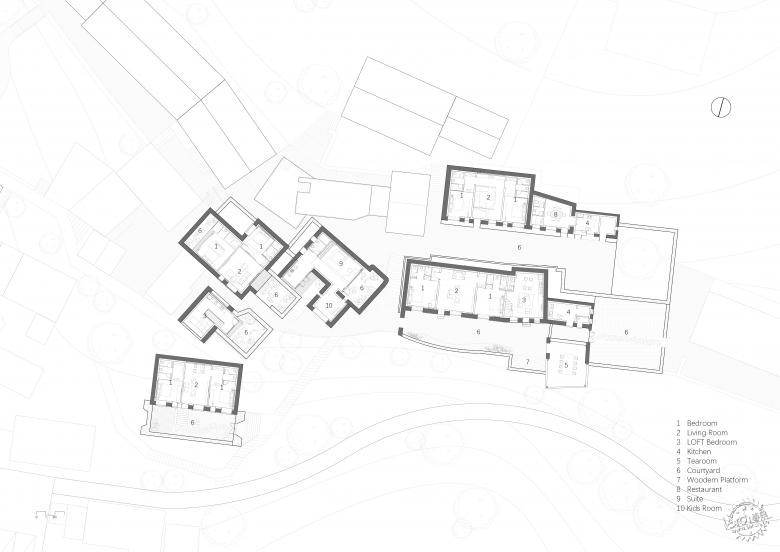
首层平面图 / Ground Floor Plan
Drawing © United Practice Architects
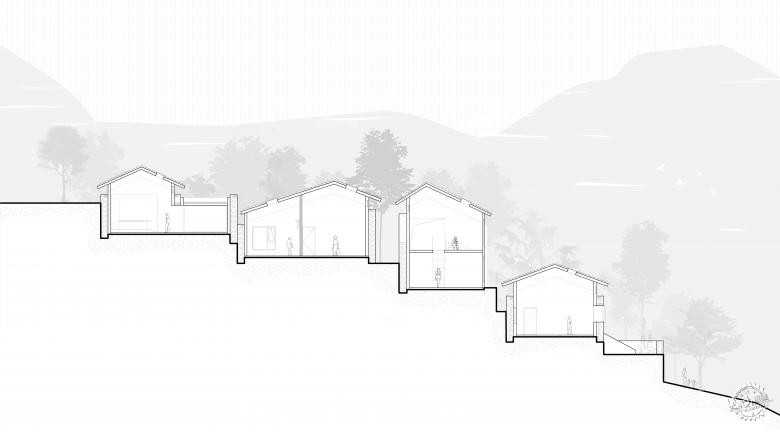
剖面图 / Section
Drawing © United Practice Architects
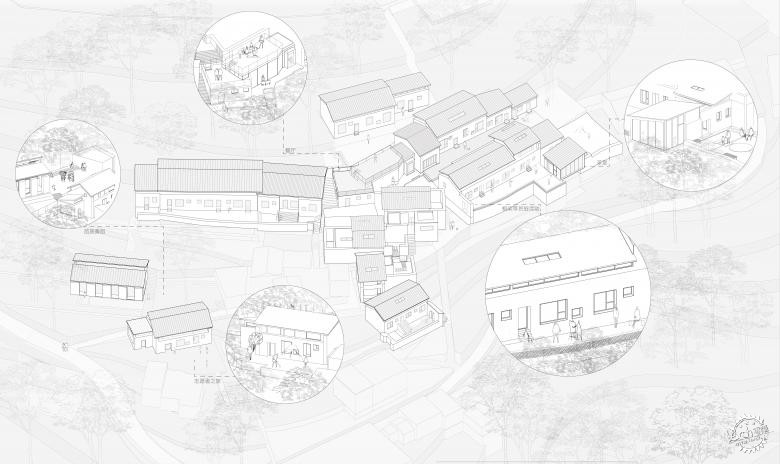
公共活动分析图 / The Analysis Of Public Activity
Drawing © United Practice Architects
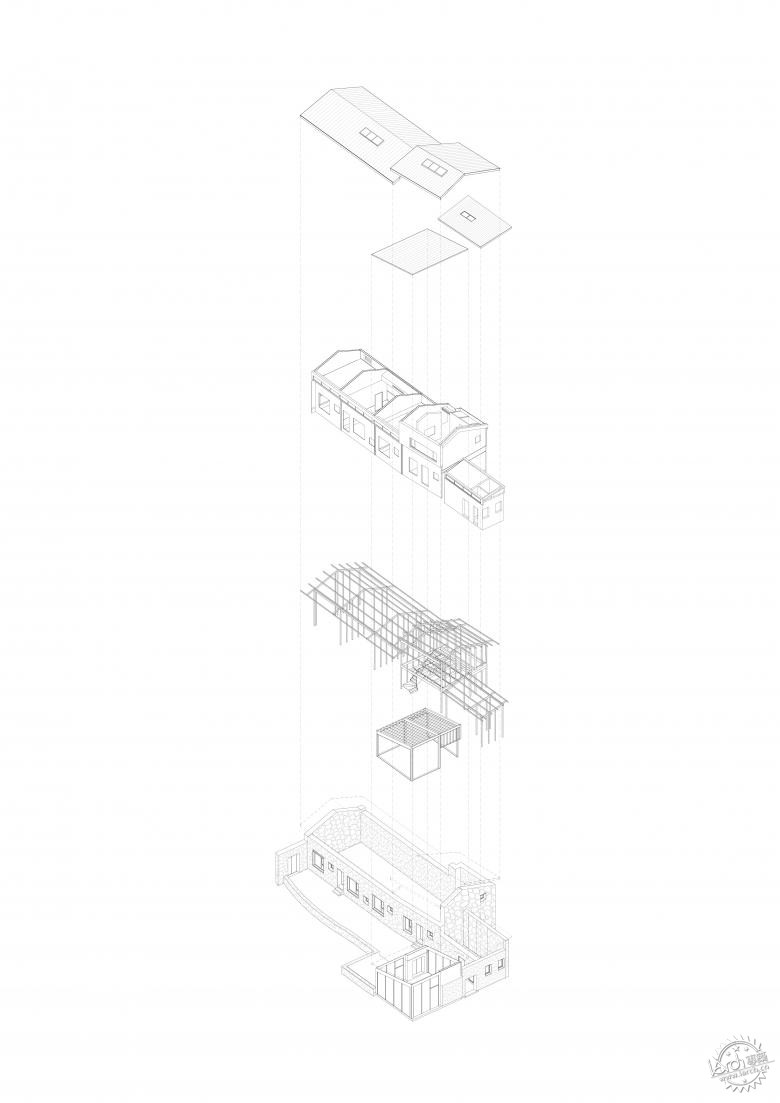
结构分析图 / The Analysis Of Construction
Drawing © United Practice Architects

墙体轴测图 / Wall Axonometric
Drawing © United Practice Architects
建筑设计:United Practice Architects | UPA
地点:中国湖南省凤凰县廖家桥镇拉毫村
年份:2020
造价:1M-100M
客户:中国扶贫基金会
团队:Zhou Chao, Deng Kechao, Cen Zixin, Zhang Hang, Deng Haijuan, Xu Yixin, Mu Wei, He Wen, Luo Junxian, Wu Jinsong
Architects: United Practice Architects | UPA
Address: Lahao Village, Liaojiaqiao Town, Fenghuang County, Hunan Province, China
Year: 2020
Cost: 1M - 100M
Client: China Foundation For Poverty Alleviation
Team: Zhou Chao, Deng Kechao, Cen Zixin, Zhang Hang, Deng Haijuan, Xu Yixin, Mu Wei, He Wen, Luo Junxian, Wu Jinsong
|
|
